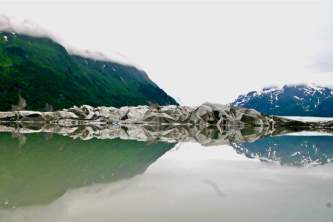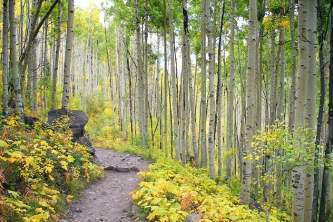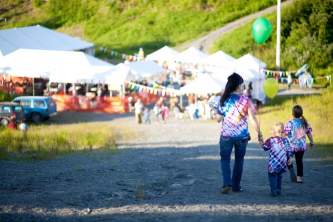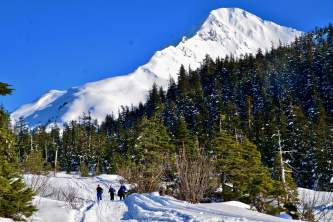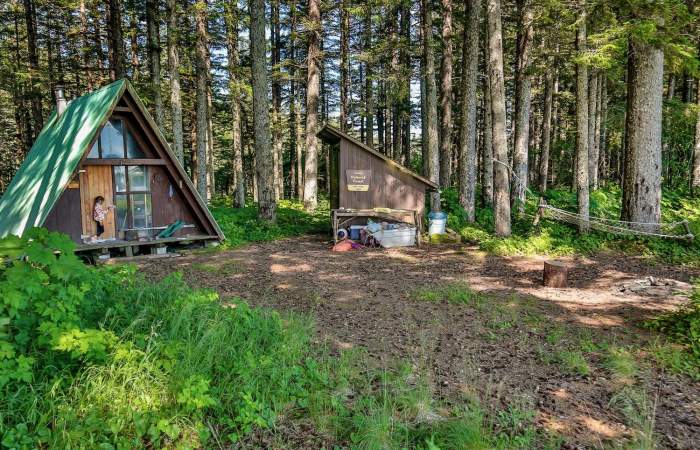Cordova
Getting There
| Anchorage |
|
| Whittier |
|
How Long to Spend
2 nights
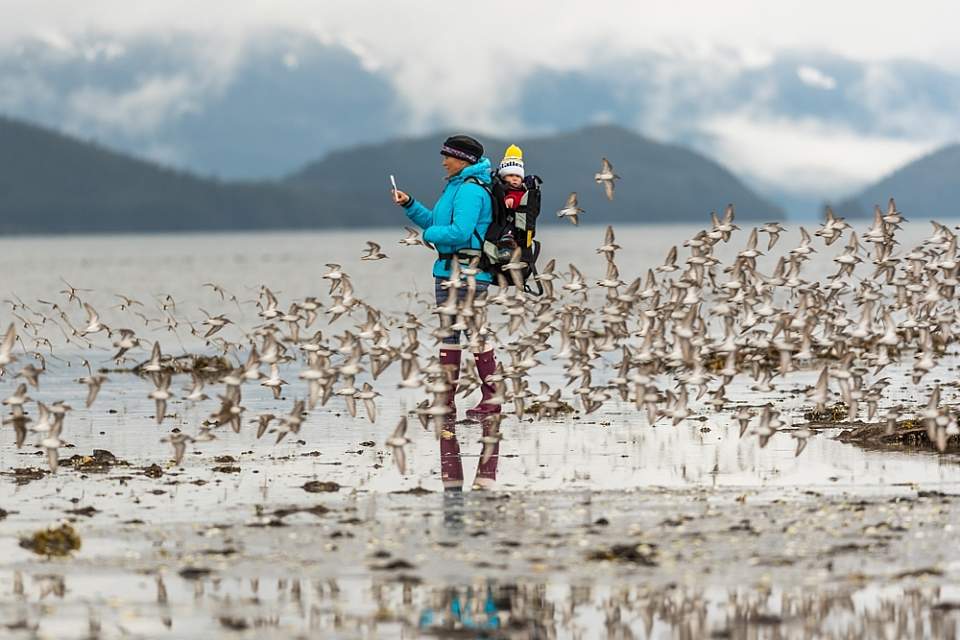
Shorebirds at Hartney Bay
With the Sound’s largest fishing fleet and a cool rainforest climate at the base of towering mountains, Cordova has the maritime feel of a mossy community you might find in Southeast Alaska. Located on the mainland, about 50 miles southeast of Valdez and 150 miles from Anchorage, Cordova can only be reached by air or by boat.
The population of just 2,400 full-time residents gives Cordova a small-town atmosphere. Locals know each other by first name, and every restaurant and quirky downtown shop is only a few minutes’ walk from just about everywhere else. But the town’s population more than doubles every summer, beginning when the world-famous Copper River red and king salmon fishery ramps up in mid-May.
With thousands of seasonal workers and visitors, the salmon catch powers the economy, dominating life and conversation. As a result, any trip to Cordova opens a vivid window on life in a working Alaskan port, with rich seafood for dining and marine charters for adventure. The community’s Alaska Native heritage and pioneer roots complete the experience.
It’s also a great base to explore the vast Copper River Delta and the eastern reach of the Chugach National Forest. With 700,000 acres, the delta is the largest contiguous wetland on the Pacific Coast of North America, drawing more than 5 million migratory birds each spring.
Favorite Attractions
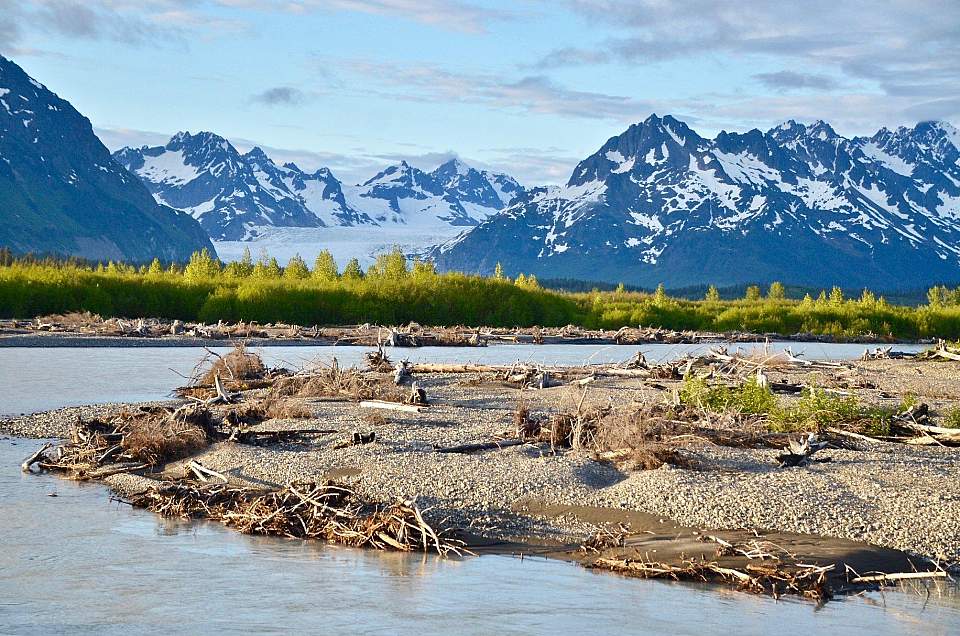
View from the Copper River Highway. Photo: Wendy Ranney
- Enjoy the festivals and activities. Come experience one of Cordova’s liveliest celebrations—the Copper River Delta Shorebird Festival. Held each May, this annual festival celebrates the arrival of more than 5 million migratory birds. July is when to arrive if you like salmon; that’s when you’ll find the Copper River Salmon Jam. The community is abuzz with vendors, shops, games, running races, live music, and good food. In winter, don’t miss the Iceworm Festival, held each year at the end of January/early February. Did we mention fishing? Cordova is home to the legendary Copper River reds (sockeye salmon) and the rich-as-fudge Copper River Kings (Chinook salmon). Many streams along the Copper River Highway offer decent bank-side fishing, and the harbor hosts a charter fleet targeting halibut, lingcod, rockfish, and salmon out in Prince William Sound and the Gulf of Alaska.
- Drive the Copper River Highway & See Glaciers. Travel east from Cordova across the sprawling delta to find hiking trails, campgrounds, canoeing, sport fishing, and birding. The road used to extend to the Million Dollar Bridge and Childs Glacier Recreation Site, but a bridge at mile 36 is currently washed out, and a fix is not likely for years. Don’t let that deter you though! Child’s Glacier is a gorgeous glacier and makes for a great visit. Access it through a local air charter like Ridgeline Aviation, or stay at the Childs Glacier Lodge, which includes a jet boat trip across the river and then a shuttle to the lodge. Visitors can also drive and take a short walk to see Sheridan Glacier, just past the Cordova Airport at mile 14 on the highway.
- Explore Alaska Native heritage. For thousands of years, the Eyak Native people lived on Orca Inlet, relying on the rich natural resources of the ocean and forest. Visit the lIanka Cultural Center, dedicated to the revival and preservation of the crafts, skills, and wisdom of the region’s Eyak, Alutiiq, Ahtna, and Tlingit peoples. (“Ilanka” is the Alutiiq word for “family.”)
- Learn about Cordova’s Tumultuous history. Visit the Cordova Historical Museum to learn all about the fascinating backstory. Founded as a fishing outpost and trading center where cultures collided, early Cordova soon found itself at ground zero of a race to build a railroad to the Kennecott Copper Mine—the most expensive privately funded industrial project of its time. Later, Cordova helped stage Alaska’s first oil boom in Katalla. The 1989 oil spill by the Exxon Valdez tanker devastated the local economy, but the community became a nexus for scientific study and public awareness of the impact.
- Pursue Wild Fungi. Lurking on the floor of the pristine Chugach rainforest are myriad mushrooms and edible fungi, nurtured by the wet climate and the nutrients delivered by returning salmon. The annual Cordova Fungus Festival, held each September, explores these connections and celebrates the gathering of other wild food with field trips, art classes, lectures, and feasts.
Regenerative Tourism
As the first community in Alaska to adopt a regenerative tourism destination strategy, Cordova has set its aim at providing opportunities for visitors to leave this destination better than they found it. This model seeks to work together with and build up the local ecosystem and cultures as well as the current industries and businesses through tour offerings that promote cultural revitalization, environmental restoration, hyper-local spending, and grow regenerative industries. Opportunities to experience and support this wild yet delicate ecosystem and culture abound in Cordova, especially during its seasonal celebrations.
Getting There
Cordova lies on Orca Inlet in the southeastern corner of Prince William Sound, some 150 miles from Anchorage and 50 miles from Valdez (it’s about 85 miles by water.)
- Fly. There’s daily jet service from Anchorage on Alaska Airlines, which takes less than an hour and costs about $350 round-trip on average.
- Ferry. The Alaska Marine Highway System offers limited ferry service to Cordova from Whittier. This is a great option if you’d like to bring your car. From Cordova, the next stop by ferry is Valdez, another community on Prince William Sound. From Valdez, you can drive the Richardson Highway back to Anchorage, forming a loop. The sailing calendar is typically released late February / early March and varies by year.

